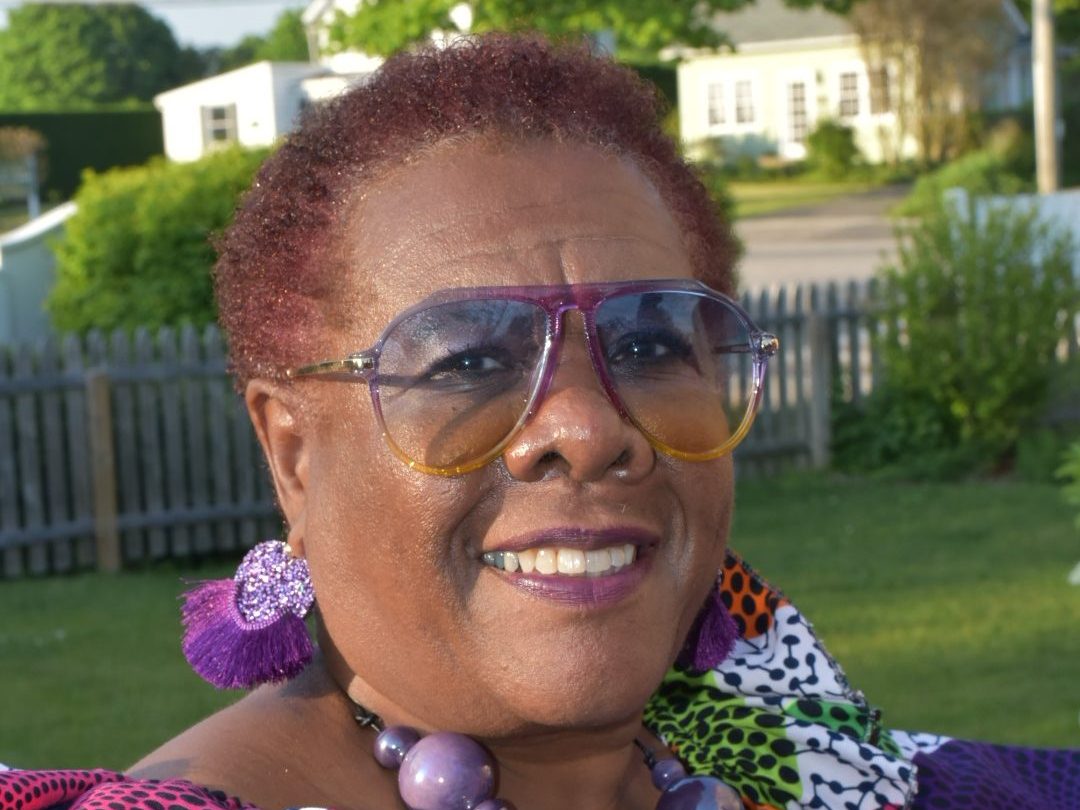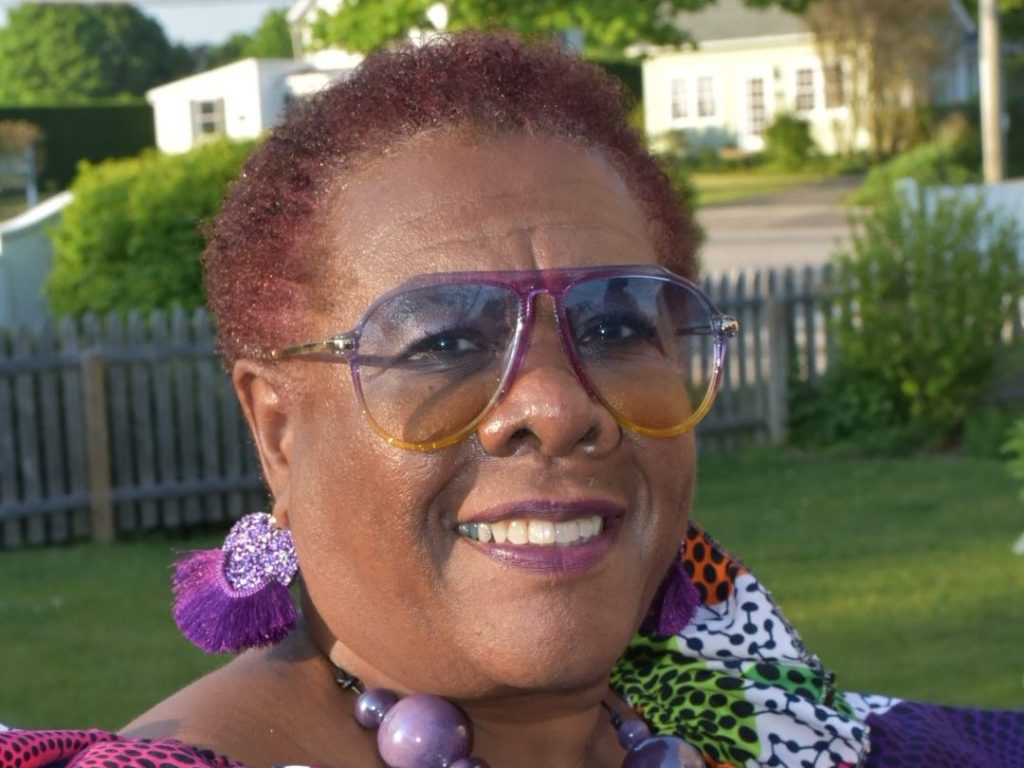Meet Brenda Simmons, Founder of the Southampton African American Museum

Brenda Simmons is quick to say that it was a combination of sheer force of will and divine intervention that created the Southampton African American Museum. Opened Juneteenth 2021, the museum highlights many aspects of African American life in the Hamptons, but none more than its artistic history.
“Many people didn’t realize that there were even African Americans living in the Hamptons, much less artists,” says Simmons, who is the founder and president of the museum, which took 16 years to go from an idea to a reality.
The building was a half barber shop and half beauty shop that was built by Emmanuel Seymore, who was among the African Americans who came north during the Great Migration of the 1940s-50s from such states as North Carolina, South Carolina and Virginia.
“My auntie, Evelyn Baxter, who first migrated to Harlem and obtain her beautician license in New York, married Seymore’s cousin and came out to work in the beauty shop,” Simmons explains. “I was about eleven or twelve years old and excited to ‘work’ for my Auntie answering the phone and writing down appointments. It wasn’t about the money. It was a little job and the mentorship was priceless.”
Simmons, born and raised in Southampton, pursued the museum project while assistant to the then Village of Southampton Mayor Mark Epley. The museum’s official name is the East End African American Museum & Center for Excellence, doing business as Southampton African American Museum. Simmons “rejourneyed,” (retired) from the Village in 2015 and continued the work toward the museum, which had its official opening Juneteenth 2021, the same weekend Biden officially made Juneteenth a holiday.
Prior to working as assistant to the mayor, Simmons worked as a counselor for the Higher Education Opportunity Program at Southampton College, a program giving opportunities for inner-city students, where she curated her first art show. While not formally trained in art history, Simmons has worked to educate herself about art, composition and curation. She also has a knack for working with others. She was able to secure additional funding for that exhibit from one of the artists being featured.
“I’ve always tried to conduct myself with integrity and excellence and that pays off,” Simmons remembers fondly. “She just took her checkbook out and said “How much do you need?’ It was a great exhibition which was an eye opener even for me.”
She also worked closely with the staff at the Southampton Historical Museum. Her two shows at the Southampton Historical Museum were “Mahogany I” and “Mahogany II.” She wanted to showcase the African American artist population from the Sag Harbor area.
“There was a knack for curating that I didn’t even know I had,” Simmons says of that first foray into curating. “Both shows were a great success.”
It was gestures such as these that helped Simmons to keep pushing forward when the going got tough. For example, she needed assistance with her paperwork to declare the museum a not-for-profit. The attorney she hired wasn’t doing the job. His office legal intern and the intern’s professor stepped in and completed the work. In another instance, a Village manager sent a letter to the mayor suggesting the barbershop be torn down because it had been vacant for a few years. Simmons went into the mayor’s office and said if they tried, she’d “be the crazy woman standing in front of the bulldozer.” After sharing her personal connection to the building, she was able to convince the mayor that the building and the museum were vital to the Village of Southampton.
“It was the phenomenal architect, Siamak Samii, who saw me through the sixteen years of getting the museum up and running,” says Simmons of the building that had a cracked foundation and would need to be lifted and a new foundation added. “Discovering that issue I was concerned that the contractors find the right company to lift the building, because I knew of an historical building that was lifted and fell apart.”
Simmons shared that it was several challenges during her 16-year project; from dismissing a contractor and rebidding, to a COVID-forced construction halt.
“I just believed it would be alright,” Simmons said. “It was like I could see it in my mind that it was going to be OK.”
The museum, which closed for the season Nov. 15, will reopen in mid-January for its third annual Black History program. While she is tight-lipped about next year’s collaboration with the Southampton School District, she says that it will be a phenomenal exhibition showcasing young local artists with a tentative theme about resilience. The museum also will feature the works of artists from the North and South forks. Simmons says she is looking forward to participating in the 2026 250th anniversary celebrations for the United States.
In addition to Black History Month, the museum will premiere two new exhibitions: May 30th weekend which will run through 4th of July weekend; and then the next will premiere the following week and run to November. Simmons says one of her sincere desires is to give young up-and-coming artists an opportunity to display their art, get recognition and exposure and when possible the pleasure of offering them their first solo exhibition.
While with open arms she says “All are Welcome” and all ages will come to the museum, she is particularly interested in students and even younger children visiting and learning both local history and contributions in American history in the museum.
“Exposing young people to the arts is always beneficial. For example. During my time at the local college my three-year-old granddaughter was with me and talking to one of the artists in front of one of his works,” Simmons remembers. “My granddaughter started talking about what she saw in the painting. It was amazing. I would tell any parent that if your child shows an interest in something, to help them pursue it.”
Her granddaughter, Nylejah Green, went on to graduate from FIT and works for a company in New York City designing clothes.
“When I was in school, I was interested in art, but thought I wasn’t good enough to pursue it, but art and poetry are a fond part of my life.”
The museum is at 245 North Sea Rd. in Southampton. For more information, call 631-353-3299 or visit saamuseum.org.
Todd Shapiro is an award-winning publicist and associate publisher of Dan’s Papers.









